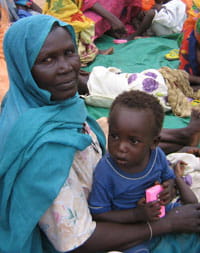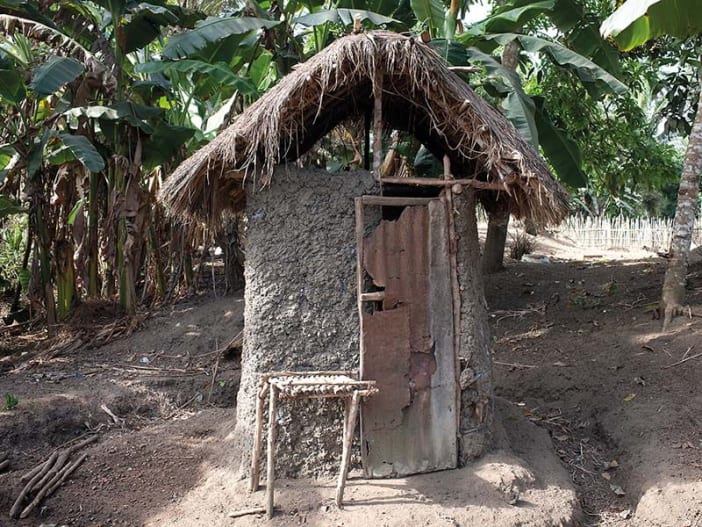Health clubs have been set up in order to communicate health messages and provide fun activities for women and children affected by the conflict. The clubs on the border with Chad also include nomadic people who have had very little access to any sort of education and are keen to learn about good hygiene. There are women’s clubs for a total of 14,000 women, and children’s clubs for 65,000 children across the Darfur region. In order to fit into the women’s daily routines and allow access for the few children who attend school, the clubs tend to meet in the early evening twice a week.
Each club is run by a group of local facilitators who are volunteers. The children’s clubs also have an ‘encourager’ in each group of about 50 children. The encourager is a child who guides his or her peers and promotes hygiene through example.
The women’s clubs provide an opportunity for social time and discussion about how to ensure they and their families stay healthy. Various methods are used for communicating and discussing health. For example, as it is cultural for one of the local tribes to jump to music, the women enjoy jumping to various songs and rhymes about hygiene.
The children’s clubs involve a range of activities related to health, such as use of puppets, stories, songs, cloth charts, drawings, drama, skipping rhymes and games. One participatory activity is the ‘rating chart’ where children are asked a question such as, ‘how often do you wash your hands?’ Different choices are shown by pictures drawn on the ground with a stick. They use a stone to mark their answer. They then compare their answer with the answers of other children. The answers can be recorded and the activity repeated after a time to see how health-related behaviour is changing.
Men tend to be more difficult to target with hygiene messages than women and children as they already feel quite well informed about hygiene and are not so keen on the methods used in the women’s clubs, such as singing songs. They sometimes receive such messages at community meetings. They also learn through household visits, which is another element of the programme. Some men have volunteered to take part in the programme as facilitators in the children’s clubs.
Household visits
Household visitors visit homes in the area to pass on hygiene messages and assist families to put into practice what they are learning at clubs. They provide vulnerable families with additional support such as identifying malnourished children for the nutrition programme. The household visitors are trained to provide families with psychosocial support where it is needed.
The household visitor checks to see that the latrine is clean and well maintained, and that water and soap or ash is available for washing hands. If the inspection is successful, the household visitor puts up a flag outside the latrine to show the neighbours that it is well looked after. At the next visit, if the inspection is unsuccessful, the household visitor takes the flag away. This simple method has proved to be highly successful in motivating people to look after their latrines, although it works better for latrines that are used by one household than for shared latrines. Tearfund is therefore trying to provide more household latrines. This method is also empowering for the household visitors, because the presence of flags shows the fruit of their own work in educating the households.
Training the volunteers
Each month the club facilitators, encouragers and household visitors receive training. The content of the training is decided by the volunteers themselves. For example, during the mango season they may ask for training about hand-washing and diarrhoea as people are likely to pick up and eat mangoes without washing the fruit or their hands. In winter the volunteers may ask for training about colds.
The volunteers are taught hygiene messages and various methods for communicating those messages. Some of the facilitators cannot read, so pictures are provided to help them to remember the different activities they can share with the community.
Soap distribution
The United Nations has contracted Tearfund to distribute soap to communities in Darfur. This distribution has been incorporated into the health programme. There are three methods of soap distribution:










